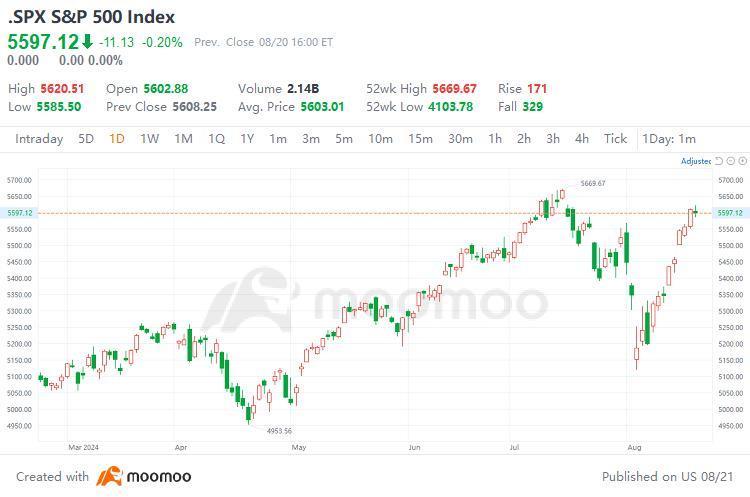Insight into Market Fluctuations: How to find Investment Channels using S&P 500 and Market Volatility Index
As of August 20th, the S&P 500 index closed at 5,597.12 points, down 11.13 points, or 0.20%, from the previous trading day. While this fluctuation may seem small, we have the opportunity to find some investment opportunities by combining it with the current backdrop of global economic uncertainty.

The VIX index measures market expected volatility, and its value often indicates an increase in investor concerns about future market volatility. Therefore, let us analyze the market situation by combining the S&P 500 index and the VIX index. In the current US stock market, any significant increase in the VIX index is worth our close attention, as it may indicate upcoming market turbulence, which is a critical moment to reassess and adjust our investment strategy. When facing market uncertainty, we should not panic blindly but instead use this opportunity to analyze market dynamics and identify potential investment opportunities.
First, investors should closely monitor changes in the VIX index. When the VIX index rises, we can hedge our investment portfolio by buying put options to reduce potential market downside risk. At the same time, we can also obtain potential returns by shorting products related to the VIX index, especially when we expect market volatility to decrease.
Second, investors should use the VIX index to adjust their trading strategies. For example, when the VIX index is at a low level, we can expect small market volatility, which may be a good time to increase our stock holdings. Conversely, when the VIX index is at a high level, we may need to reduce our stock holdings to avoid losses caused by significant market fluctuations.
We should remember that while the VIX index is an important market indicator, it is not the only decision-making tool. We should also combine other macroeconomic indicators, company fundamental analysis, market sentiment, and other factors to develop a comprehensive investment strategy.
Disclaimer: Community is offered by Moomoo Technologies Inc. and is for educational purposes only.
Read more
Comment
Sign in to post a comment
